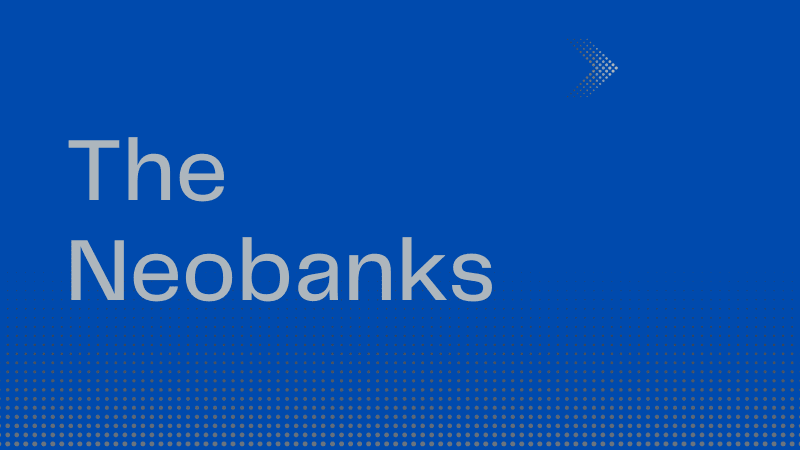Fintech can be defined as the designing and provisioning of financial services by using new technological innovations. In other words, fintech comprises tech-based businesses that compete with traditional financial institutions and collaborate with them.
Fintech platforms, also referred to as Neobanks or challenger banks, are increasingly making inroads into the Indian market. A few examples of fintech players in the Indian market are Lendingkart Finance, Zerodha, Cred, Paytm Payments Bank, MobiKwik, Policy Bazaar, Acko insurance, PhonePe, Google Pay etc.
The market potential of the Fintech industry is dependent upon Growth drivers such as a rapid increase in the use of smartphones with an ever-growing young population, accelerated internet connectivity, and the boom in E-Commerce platforms. Advancements in technology such as Big Data and Artificial Intelligence have also significantly contributed to the fintech industry.
On top of that, the Government's increased focus on formalisation of the economy, financial inclusion and the rollout of Digital India, Startup India, and launch of payment systems such as Ru-Pay Cards, BHIM-UPI as well as regulatory support given by RBI have also propelled the Industry further.
Ruthless competition in the market and disruption caused by the growth of awareness among customers have led Fintech firms to develop innovative products. The Fintech firms are teaching the approach of design-thinking to the distinct areas of banking or finance and are attuning their services to make effortless banking a reality for the customers.
Fintech companies like Kickstarter and Fuel A Dream are internet-based platforms to raise debt or equity from multiple investors as crowdfunding. Faircent and Lendenclub have facilitated peer to peer lending and borrowing. Policy Bazaar is working as an E-Aggregator to compare the prices of financial products. Jio Information Solutions, yet another Fintech company is an Account Aggregator that gathers and consolidates all the scattered data and lets an individual account holder share data from one financial institution to another to apply for a loan, insurance, or any other financial service.
Neobanks are different from traditional banks, from business models to customer care. The major difference is the availability of no physical branches for Neobanks and only an online presence. Additionally, Fintech firms are also tying up with traditional banks licensed by RBI to provide banking services such as savings accounts, instant loans, credit cards, mutual funds and fixed deposits.
Swot Analysis
Strengths
Fintech firms are operating on a "mobile-first approach", leveraging technology to minimise operating costs and are offering a customer-friendly interface, hence providing wider choice and enhanced customer experience at minimal cost and high convenience. Neobanks provide instant dashboard solutions to customers with a highly user-friendly Application Programming Interface (API). Moreover, Deep insights, Transparency, Personalised service and speed-driven procedures add to the strengths of the Neobanks.
Weaknesses
The greatest weakness is the digital divide prevalent in India, as this would keep a major chunk of the population devoid of the services provided by Neobanks. The narrow range of financial product offerings compared to traditional banks as the Neobanks do not yet offer products such as car loans, Home loans, business services, etc. Non-availability of in-branch services and the operational inexperience of Neobanks vis-a-vis traditional banks may weaken the bank-customer relationship, especially for non-tech-savvy customers. Regulatory and compliance burdens, the absence of enabling regulations and low customer credibility can also be weaknesses for the Neobanks.
Opportunities
About 58.4% of the population of India is out of the banking fold in tier 2 and tier 3 cities. Therefore, Neobanks have a huge potential for growth as per the "The Evolution of Neobanks in India" report of PWC. The Neobanks can issue different and varied products to attract customers and walk towards the realm of "virtual banking". Neobanks can develop features and partnerships to serve the customers much more efficiently. The Neobanks can tie up with small banks as this may allow them to offer better rates of interest for lending and deposits. They can provide finances to the MSMEs (Flow-based lending, etc.) and tap their multifold potential.
Moreover, improvement in credit creation, especially micro-financing, can go a long way for the Neobanks. Focus on peer to peer opportunities can be enhanced by concentrating on the credit needs of MSMEs, households and individuals and creating a marketplace for debt financing where savers, non-banks and banks are permitted to lend. Venture capitalists and private equity investors are keeping a hawk's eye on the market opportunities in the fintech industry. Their deep pockets can be leveraged into hiring innovation to create the best products and services.
Threats
With the increasing digitalisation of retail banking, the competitive threat increases for new and existing market players in the fintech industry as the players, to attract more customers, are forgoing their profits and providing more and more discounts. Delay in delivering regulatory ambit to digital banks by the RBI has furthered a "wait and watch" approach in the Industry. This has also led the Neobanks to tie up with RBI licensed banks and not set up shop independently.
Security is another challenge and threat for the Industry as online fraud has continuously evolved with growing technology. This has led to customers feeling uneasy about moving money online due to the prevalence of phishing activities, account takeovers by hackers and leaks of sensitive personal data.
